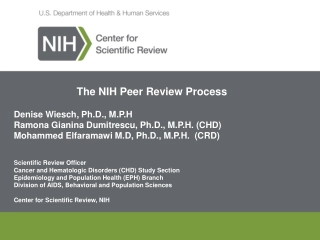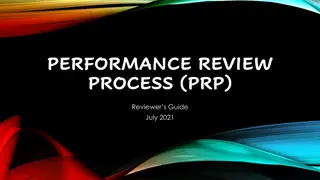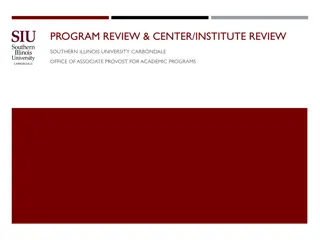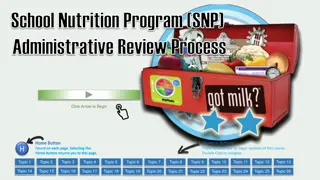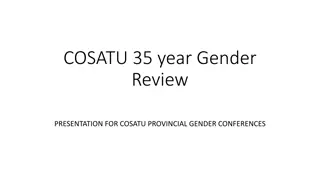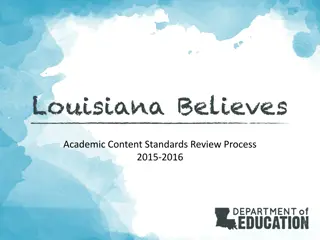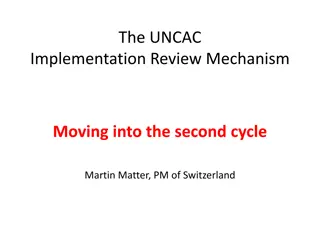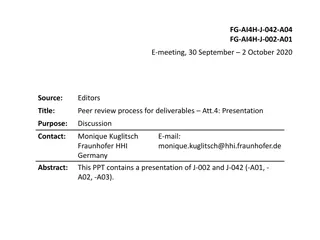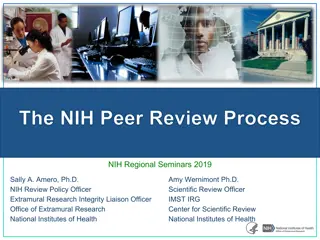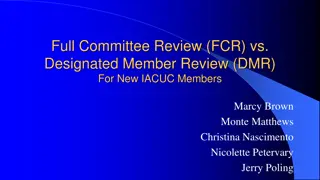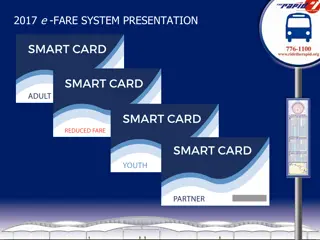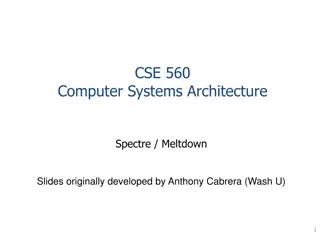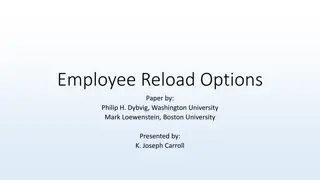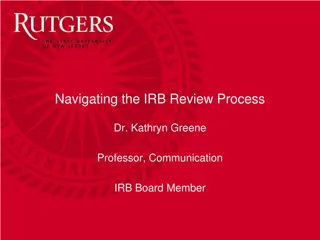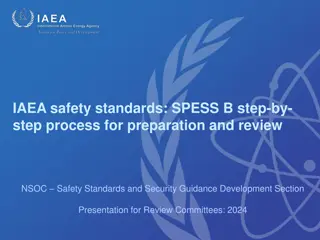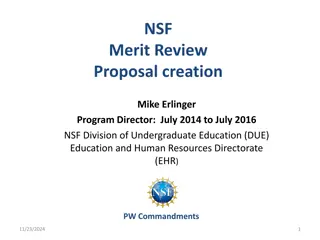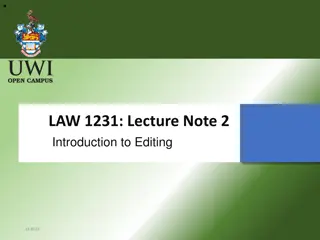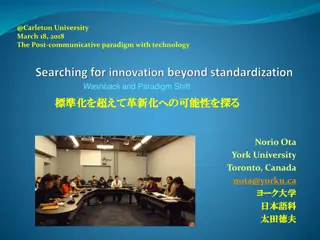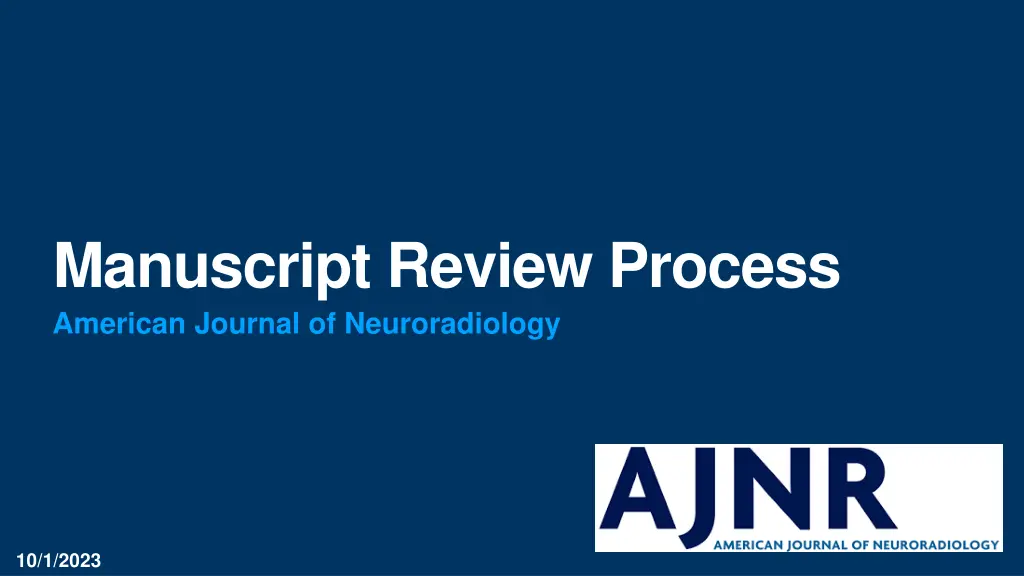
Efficient Manuscript Review Process at American Journal of Neuroradiology
Learn about the streamlined manuscript review process at AJNR, starting with manuscript submission and expert selection, followed by initial review and possible upfront rejection. Discover how decisions are made and communicated swiftly within editorial teams.
Download Presentation

Please find below an Image/Link to download the presentation.
The content on the website is provided AS IS for your information and personal use only. It may not be sold, licensed, or shared on other websites without obtaining consent from the author. If you encounter any issues during the download, it is possible that the publisher has removed the file from their server.
You are allowed to download the files provided on this website for personal or commercial use, subject to the condition that they are used lawfully. All files are the property of their respective owners.
The content on the website is provided AS IS for your information and personal use only. It may not be sold, licensed, or shared on other websites without obtaining consent from the author.
E N D
Presentation Transcript
Manuscript Review Process American Journal of Neuroradiology 10/1/2023
Introduction These slides have been created to explain the new process AJNR will follow in reviewing submitted papers starting October 1, following the appointment of Dr. Max Wintermark as the new editor-in-chief.
Step 1 Manuscript Submission During the submission of their manuscript, authors are required to choose one (or two) relevant expertise subsection(s) for their article from the 14 options provided by the journal. This streamlines the manuscript assignment process, as each subsection has a dedicated editorial team associated with it: o Emergency Neuroradiology o Neurovascular Imaging o Neurodegenerative Disorder Imaging o Ultra-High-Field MRI/Imaging of Epilepsy/Demyelinating Diseases/Inflammation/Infection o Brain Tumor Imaging o Mental Health Neuroimaging o Pediatric Neuroimaging o Head and Neck Imaging o Spine Imaging & Spine Image-Guided Interventions o Neurointervention o Neuroimaging Physics/Functional Neuroimaging/ CT and MRI Technology o Molecular Neuroimaging/Nuclear Medicine o Health Policies/Quality Improvement/ Evidence-Based Neuroimaging o Artificial Intelligence They also provide details about the statistical methods utilized in the manuscript: o Clinical trials with prospective data collection o Multivariable regression methods o Meta analyses o Measures of diagnostic accuracy (AUC, sensitivity, specificity, etc.) o Machine learning or AI methods (e.g. deep learning, neural networks, etc.) o Simple descriptive statistics
Step 2 Initial Review The manuscript is assigned to the relevant editorial team, comprising a senior editor and two associate editors. For manuscripts with overlapping topics (for instance neurovascular and AI), two relevant editorial teams are assigned. The editor-in-chief and the deputy editor will be informed when a manuscript is assigned to an editorial team. Following a collaborative discussion, a decision of sending the manuscript for reviews or upfront rejection is made within 3 business days. The editor-in-chief and the deputy editor are invited to participate in the collaborative discussion at the discretion of the senior and associate editors. The senior and associate editors internally decide who is the handling editor" for the manuscript being reviewed.
Step 3a Upfront Rejection If the manuscript: o is felt not to be a good fit for AJNR, o is not original compared to other articles already published in the literature, o presents serious methodological flaws, o is likely to receive negative reviews as per the senior and associate editors, the handling editor composes a rejection letter (templates available) informing the authors and explaining the rationale for the upfront rejection (very important that the letter addresses these points). Upfront rejections are expected to represent approximately 30% of manuscripts submitted to AJNR. The rejection letter is sent to the authors. A copy is sent to the other senior/associate editors of the team in charge of the article, as well as to the editor-in-chief and deputy editor.
Step 3b Peer Review If the editorial team decides to move forward with the peer review, the handling editor invites 5peer reviewers from the pool of reviewers assigned to that subsection, with each subsection having its own group of dedicated reviewers. For manuscripts with overlapping topics (for instance neurovascular and AI), when two relevant editorial teams are assigned, and 2-3 reviewers are invited from each subsection. The goal is to have 3 reviewers agree to review the manuscript. The reviewers are expected to perform their review within 10 business days.
Step 4 - Decision After receiving the reports from at least 2 peer reviewers, the handling editor carefully reads the reviews and consults with other members of the editorial team to make a decision. At their discretion, the editorial team can also consult with the editor-in-chief and the deputy editor for further insights. The potential outcomes of this process are: "Acceptance", "Further Minor/Major Revision", or "Rejection". The handling editor composes a decision letter informing the authors (templates available). In their decision letter, the handling editor needs to filter the reviewers comments to ensure relevancy and consistency amongst the different reviewers. The handling editor should guide the authors in terms of how to address the reviewers comments (very important!) In case of rejection, the handling editor needs to summarize the rationale for rejection (very important!) The decision letter is sent to the authors. A copy is sent to the other senior/associate editors of the team in charge of the article, as well as to the editor-in-chief and deputy editor.
Statistical Reviews Three scenarios exist for statistical reviews based on the type of statistical methods used in the article and based on the assessment of the senior/associate editors: Scenario #1: Primary Statistical Review o Clinical trials with prospective data collection o Multivariable regression methods Scenario #2: Secondary Statistical Review o Meta analyses o Measures of diagnostic accuracy (AUC, sensitivity, specificity, etc.) o Machine learning or AI methods (e.g. deep learning, neural networks, etc.) o At the discretion of the senior/associate editors Scenario #3: No Statistical Review o Simple descriptive statistics o Rejected articles
Statistical Scenario #1: Primary Statistical Review Step 3b Peer Review If the editorial team decides to move forward with the peer review, the handling editor invites 5 peer reviewers from the pool of reviewers assigned to that subsection, with each subsection having its own group of dedicated reviewers. In addition, if the manuscript falls in one of the following categories: o Clinical trials with prospective data collection o Multivariable regression methods the statistical senior editor (Bryan Comstock) is to be assigned as a reviewer in addition the the 5 invited reviewers. He will perform a detailed statistical review. The statistical review will be available prior to decision and will assist the senior/associate editors in making the decision. For manuscripts with overlapping topics (for instance neurovascular and AI), when two relevant editorial teams are assigned, and 2-3 reviewers are invited from each subsection. The goal is to have 3 reviewers agree to review the manuscript. The reviewers are expected to perform their review within 10 business days.
Statistical Scenario #2: Second Statistical Review Step 4 Acceptance or Minor/Major Revision Decision After receiving the reports from at least 2 peer reviewers, the handling editor carefully reads the reviews and consults with other members of the editorial team to make a decision. At their discretion, the editorial team can also consult with the editor-in-chief and the deputy editor for further insights. The potential outcomes of this process are: "Acceptance", "Further Minor/Major Revision", or "Rejection". After an "Acceptance and "Further Minor/Major Revision decision has been made, and if the manuscript falls in one of the following categories: o Meta analyses or o Measures of diagnostic accuracy (AUC, sensitivity, specificity, etc.) or o Machine learning or AI methods (e.g. deep learning, neural networks, etc.) or o At the discretion of the senior/associate editors the statistical senior editor (Bryan Comstock) will perform a brief, focused statistical review within business 5 days. Once the brief, focused statistical review is received, the handling editor composes a decision letter informing the authors incorporating the statistical review comments.
Review Process of Manuscripts Submitted after Major & Minor Revisions
Introduction The following slides provide an overview of the revised manuscript review process.
Step 1R The submitted revised manuscript is assigned to the same editorial team(s) that reviewed it during the first submission. Ideally, the same handling editor who assisted with the initial review carefully assesses the modifications made. At times (for instance to avoid delays), a different senior/associate editor from the same editorial team may have to assume the role of handling editor. The article is not sent back to reviewers.
Step 2R After assessing the revision, the handling editor consults with other members of the editorial team to make a decision. At their discretion, the editorial team can also consult with the editor-in-chief and the deputy editor for further insights. The potential outcomes of this process are: "Acceptance , Further Revision Needed or "Rejection". The handling editor composes a decision letter informing the authors (templates available!). In case of further revision needed, the handling editor needs to detail the revisions needed (very important!) In case of rejection, the handling editor needs to summarize the rationale for rejection (very important!) The decision letter is sent to the authors. A copy is sent to the other senior/associate editors of the team in charge of the article, as well as to the editor-in-chief and deputy editor.
Please feel free to reach out via email to mw.ajnr.eic@gmail.com or khalm@asnr.org.

